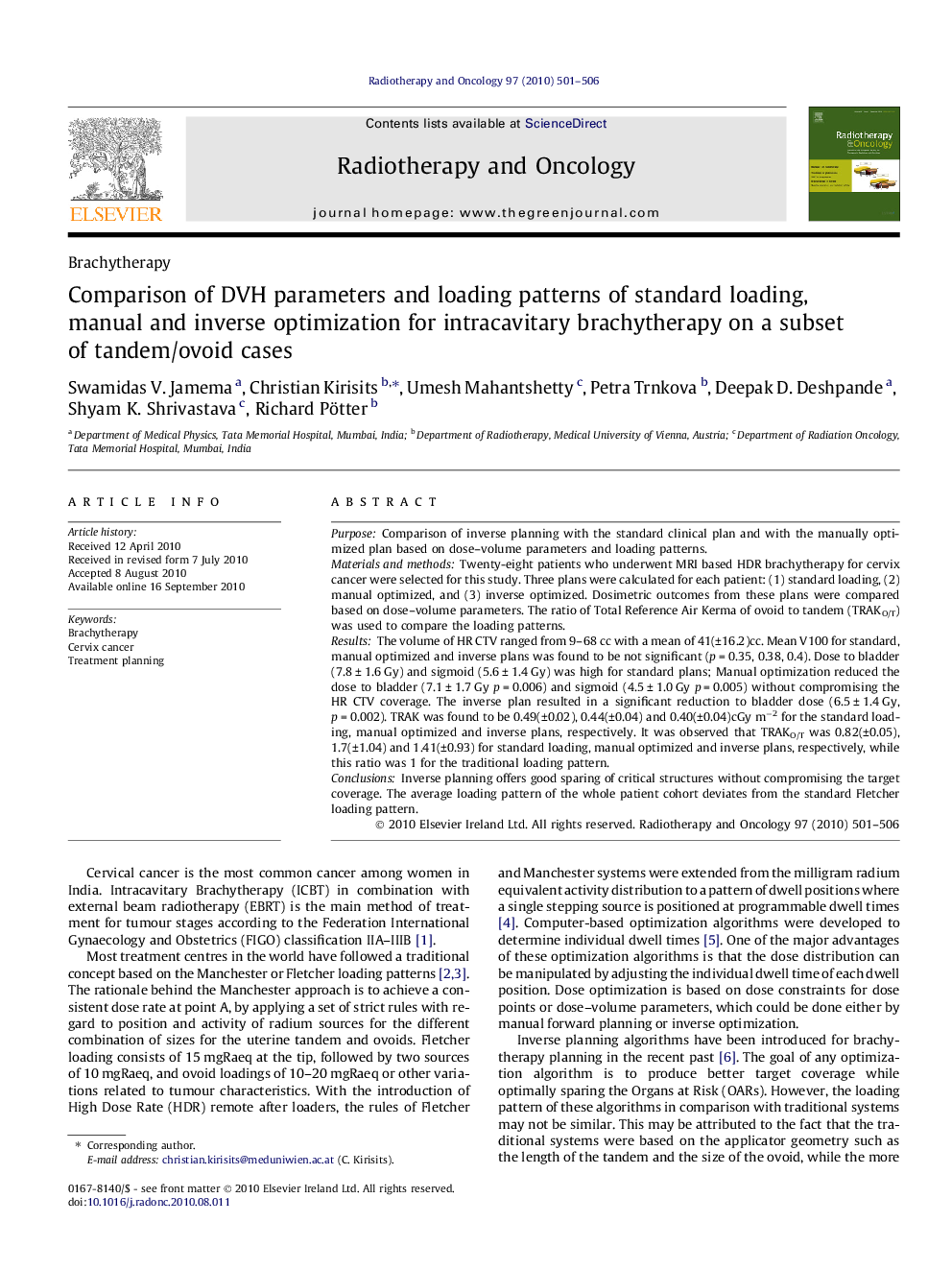| Article ID | Journal | Published Year | Pages | File Type |
|---|---|---|---|---|
| 2159206 | Radiotherapy and Oncology | 2010 | 6 Pages |
PurposeComparison of inverse planning with the standard clinical plan and with the manually optimized plan based on dose–volume parameters and loading patterns.Materials and methodsTwenty-eight patients who underwent MRI based HDR brachytherapy for cervix cancer were selected for this study. Three plans were calculated for each patient: (1) standard loading, (2) manual optimized, and (3) inverse optimized. Dosimetric outcomes from these plans were compared based on dose–volume parameters. The ratio of Total Reference Air Kerma of ovoid to tandem (TRAKO/T) was used to compare the loading patterns.ResultsThe volume of HR CTV ranged from 9–68 cc with a mean of 41(±16.2)cc. Mean V100 for standard, manual optimized and inverse plans was found to be not significant (p = 0.35, 0.38, 0.4). Dose to bladder (7.8 ± 1.6 Gy) and sigmoid (5.6 ± 1.4 Gy) was high for standard plans; Manual optimization reduced the dose to bladder (7.1 ± 1.7 Gy p = 0.006) and sigmoid (4.5 ± 1.0 Gy p = 0.005) without compromising the HR CTV coverage. The inverse plan resulted in a significant reduction to bladder dose (6.5 ± 1.4 Gy, p = 0.002). TRAK was found to be 0.49(±0.02), 0.44(±0.04) and 0.40(±0.04)cGy m−2 for the standard loading, manual optimized and inverse plans, respectively. It was observed that TRAKO/T was 0.82(±0.05), 1.7(±1.04) and 1.41(±0.93) for standard loading, manual optimized and inverse plans, respectively, while this ratio was 1 for the traditional loading pattern.ConclusionsInverse planning offers good sparing of critical structures without compromising the target coverage. The average loading pattern of the whole patient cohort deviates from the standard Fletcher loading pattern.
